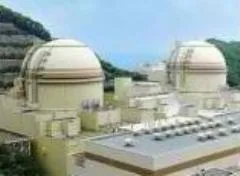
Two Japanese nuclear reactors to return to operation
Japan’s idled nuclear reactors will once again produce electricity despite widespread public opposition to nuclear energy.
The Japanese government on June 15 approved bringing the country's first nuclear reactors back online after the massive earthquake and tsunami of March 2011 that led to a shutdown of all its 50 nuclear reactors.
The decision will immediately lead to the restart of the No. 3 and No. 4 reactors run by Kansai Electric Power Company in the town of Ohi in Fukui prefecture, western Japan. The restart, however, should take at least three weeks.
The Ohi reactors were shut down in July 2011 after developing a technical fault. No radioactive material was released because of this incident, however.
The go-ahead for the restarting the two reactors is a symbolic breakthrough in the government's and utilities' efforts to avert a severe electricity crunch before this year’s peak summer demand season begins in July.
Japan’s Prime Minister Yoshihiko Noda told his countrymen last week that Japan cannot do without nuclear power. Noda suggested that the two nuclear reactors at Ohi to be restarted to head off an impending energy crisis. He said Japan has no choice but to return to atomic power in the face of severe power shortages.
All 50 of Japan’s reactors were shut down earlier this year following the Fukushima catastrophe. Before this disaster, atomic energy produced some 30% of Japan's electricity.
After the prime minister's announcement, thousands of angry protesters gathered outside Noda's official residence to protest.
Kansai Electric said bringing the two reactors online now is needed to help avert a power shortage in Osaka, Japan's second-largest metropolis by July or August, and its outlying neighborhoods. It said it will take about three weeks to get the first Ohi reactor back online.



















 Advertise
Advertise







